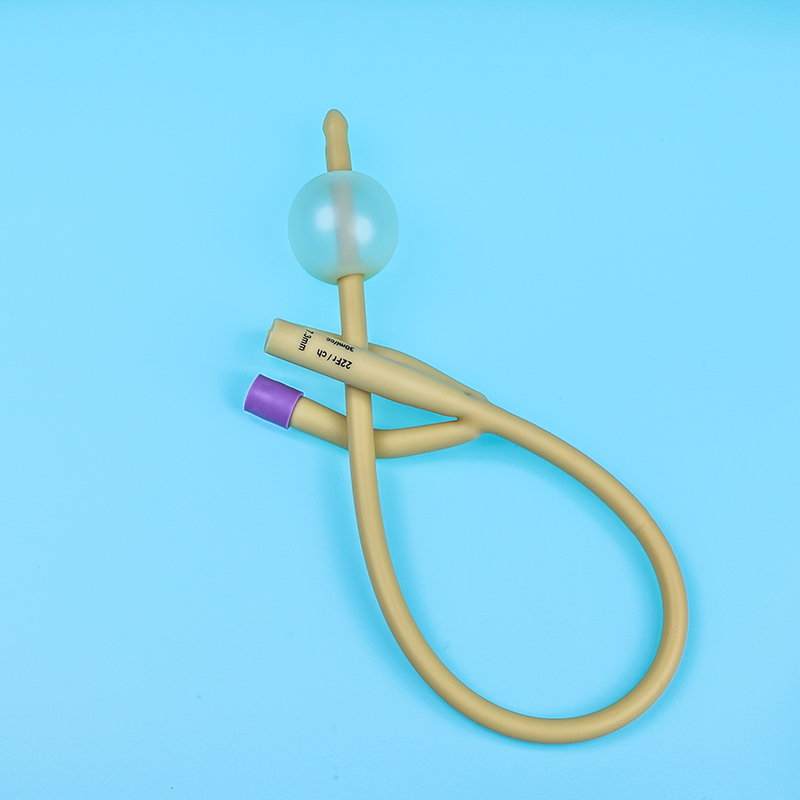Indwelling urinary catheters are essential medical consumables used globally in hospitals, clinics, and home care. Understanding their types, applications, and risks is important for healthcare providers, distributors, and patients alike. This article provides a comprehensive overview of indwelling catheters, especially IDC catheters and SPC catheters, to support informed purchasing decisions in the medical supply industry.
What is an Indwelling Urinary Catheter?
An indwelling urinary catheter, commonly known as a Foley catheter, is a flexible tube inserted into the bladder to continuously drain urine. Unlike intermittent catheters, which are inserted only when needed, indwelling catheters remain in the bladder for extended periods. They are secured by a small balloon filled with sterile water to prevent dislodgement.
Indwelling catheters are widely used after surgeries, during long hospital stays, or for patients with chronic urinary retention, mobility issues, or neurological conditions.
Difference Between SPC and IDC Catheters
There are two main types of indwelling catheters based on the insertion route:
1. IDC Catheter (Urethral)
An IDC catheter (Indwelling Urethral Catheter) is inserted through the urethra directly into the bladder. It is the most commonly used type in both short-term and long-term care.
2. SPC Catheter (Suprapubic)
An SPC catheter (Suprapubic Catheter) is inserted through a small incision in the lower abdomen, just above the pubic bone. This method is typically used for long-term catheterization when urethral insertion is not possible or causes complications.
Key Differences:
Insertion site: Urethra (IDC) vs. abdomen (SPC)
Comfort: SPC may cause less irritation in long-term use
Risk of infection: SPC may have a lower risk of certain infections
Maintenance: Both types require proper hygiene and regular replacement
Risks and Complications of IDC Catheters
While IDC catheters are effective, they carry several risks if not managed properly:
Urinary Tract Infections (UTIs): The most common complication. Bacteria can enter through the catheter and infect the bladder or kidneys.
Bladder spasms: May occur due to irritation.
Urethral trauma: Prolonged use can lead to injury or strictures.
Blockages: Caused by encrustation or clots.
Discomfort or leakage: Improper size or placement may lead to urine leakage.
To minimize these risks, healthcare providers must ensure correct Foley catheter sizes, maintain sterile technique during insertion, and follow a regular care and replacement schedule.
Types of Indwelling Catheters
Indwelling catheters vary by design, size, and material. Choosing the right type is essential for patient safety and comfort.
Common Types:
2-way Foley catheter: The standard design with a drainage channel and a balloon inflation channel.
3-way Foley catheter: Includes an extra channel for bladder irrigation, used after surgeries.
Silicone catheters: Biocompatible and suitable for long-term use.
Latex catheters: More flexible, but not suitable for patients with latex allergies.
Foley Catheter Sizes:
| Size (Fr) | Outer Diameter (mm) | Common Use |
| 6 Fr | 2.0 mm | Pediatric or neonatal patients |
| 8 Fr | 2.7 mm | Pediatric use or narrow urethras |
| 10 Fr | 3.3 mm | Pediatric or light drainage |
| 12 Fr | 4.0 mm | Female patients, post-operative drainage |
| 14 Fr | 4.7 mm | Standard adult use |
| 16 Fr | 5.3 mm | Most common size for adult males/females |
| 18 Fr | 6.0 mm | Heavier drainage, hematuria |
| 20 Fr | 6.7 mm | Post-surgery or irrigation needs |
| 22 Fr | 7.3 mm | Large volume drainage |
Short-Term Use of Indwelling Catheters
Short-term catheterization is generally defined as use for less than 30 days. It is common in:
Post-operative care
Acute urinary retention
Short hospital stays
Critical care monitoring
For short-term use, latex Foley catheters are often preferred due to their flexibility and cost-effectiveness.
Long-Term Use of Indwelling Catheters
When patients require catheterization for more than 30 days, it is considered long-term use. This is often necessary in cases of:
Chronic urinary incontinence
Neurological conditions (e.g., spinal cord injuries)
Severe mobility limitations
In such cases, SPC catheters or silicone IDC catheters are recommended due to their durability and reduced risk of complications.
Long-term care must include:
Regular replacement (typically every 4–6 weeks)
Daily cleaning of the catheter and drainage bag
Monitoring for signs of infection or blockage
Conclusion
Whether for short-term recovery or long-term care, the indwelling urinary catheter is a critical product in the medical supply chain. Choosing the right type—IDC catheter or SPC catheter—and size ensures patient safety and comfort. As a leading exporter of medical consumables, we provide high-quality Foley catheters tailored to international standards, available in various sizes and materials.
For bulk orders and global distribution of urinary catheters, contact our sales team today.
Post time: Jun-16-2025








